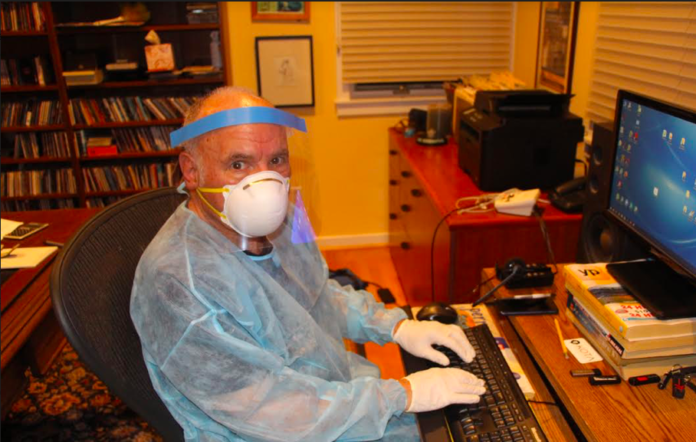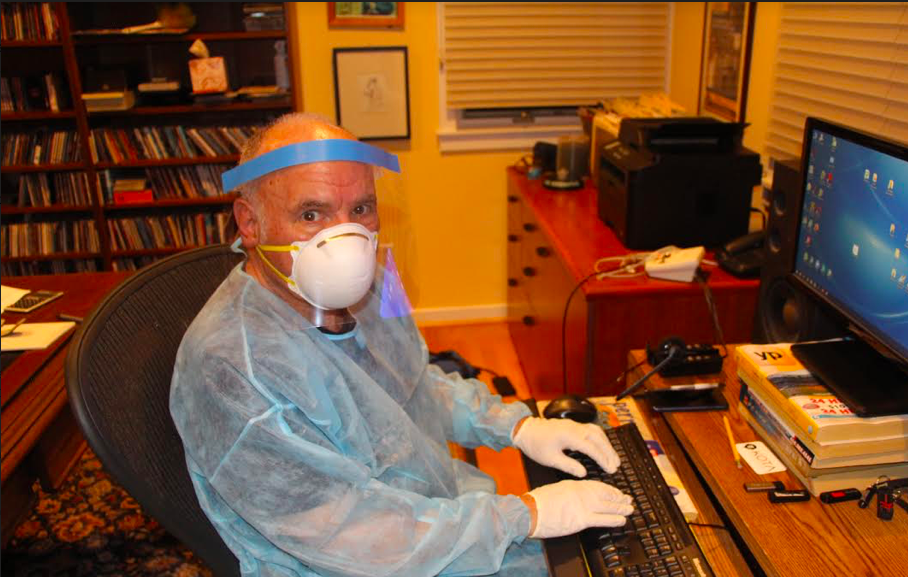
This story was supported by the Pulitzer Center.
On February 22, I left Iran after a week of covering the country’s parliamentary elections. Ten days later, my nose started running like a faucet. Normally, I would assume it’s a cold, pop some antihistamines, and proceed with my work.
But these are not normal times.

Symptoms of the coronavirus include heavy breathing, fever, cough, and—yes—a runny nose. To be on the safe side, I decided to visit Kaiser Oakland, my ever-so-friendly health care provider.
Times are definitely not normal at the doctor’s office. Each registration station has a photocopied sheet listing symptoms of COVID-19, the flu-like disease contracted from the coronavirus. I tell the nurse about my journey to Iran, a country with one of the world’s highest COVID-19 death rates.
She hands me a face mask and shows me how to put it on. The hot air circulating from my breathing makes the mask uncomfortable. But what’s a little discomfort compared to the possibility of infecting the city of Oakland?
The doctor enters the exam room, and I repeat my concern about possible infection. He hears the words coronavirus and Iran, and bolts for the door. He pauses only to ask again: “Iran?”
That Tehran taxi driver
My mind flashes back to that taxi driver in Tehran. He lived about 80 miles from Tehran in the city of Qom, the epicenter of the coronavirus outbreak. Iran had discovered only a handful of coronavirus infections at that point, so we joked about the driver’s health. Now I wonder if that’s the source of my infection.
I sit in the exam room reading The New York Times on my phone. I hear some rustling outside. A new doctor, Dr. Wilson Tse, enters wearing not exactly a hazmat suit, but a full length surgical gown, latex gloves, and a face mask.
We discuss whether my symptoms warrant taking the coronavirus test. I have written about the coronavirus and the importance of not panicking. If everyone with a runny nose crams the emergency rooms, there would be no space for seriously ill people. Given the limited number of coronavirus testing kits, public health facilities must choose to test the most serious cases.
That advice is fine until I become one of the cases.
Boston or Bust
As I sit in the doctor’s office, I consider my situation. In just a few days, I am scheduled to depart for a speaking tour at Harvard and other Boston area universities. The trip had been planned for months, and I really don’t want to cancel.
On the other hand, I certainly don’t want to spread the virus, becoming the Typhoid Mary of Boston. Nor am I anxious to die from COVID-19. I could see the opening line of my obituary: “Reese Erlich, the award-winning journalist who late in life spread the coronavirus to Boston, killing hundreds . . . .”
So what are my options? Dr. Tse calls Dr. Sumanth Rajagopal of Kaiser’s infectious disease department. I am told that I can self-quarantine for 14 days, starting on the day I first noticed symptoms. That means not leaving the house or coming in contact with anyone, including my wife. We would have to live in separate rooms, use separate bathrooms, and prepare separate meals.
Or we could ask the Alameda County Health Department to test me for the coronavirus and only impose the full quarantine if it came back positive. In the early stages of the epidemic, the Centers for Disease Control and Prevention (CDC) only allowed testing for a limited group of people exposed to the virus from China. But now the criteria have widened to include people like me.
My case, says Dr. Rajagopal, is borderline. So he calls Alameda County officials, and because of the unusual nature of my case, they call the CDC in Atlanta.
Infected and contagious
Meanwhile, Kaiser assumes I’m infected and contagious. I’m sitting on one of those uncomfortable plastic chairs that doctors’ offices always provide. I need to urinate, but Kaiser would have had to cordon off that bathroom and scrub it down before anyone could use it again. So I am given one of those plastic thingies with a wide opening and snap-on cap to pee in.
Once I leave the exam room, it must be thoroughly scrubbed down as well. After a two-hour wait, the decision comes back whether I would be tested. The answer is yes.
Poor Dr. Tse, who had already destroyed his previous personal protective equipment, must now don a new gown, gloves, and mask. He sticks a long, thin swab further up my nose than I thought possible. Same for the throat swab. He seals the swabs in plastic and prepares them for pick-up by the county health workers. They say the results would be back from the health department in 24-48 hours. We’ll see.
This quarantine business is serious. It pits the collective health of the community against individual rights. Sometimes the measures seem extreme. In early March, one whole floor of a downtown San Francisco office tower was closed because two employees had come in contact with an infected person. They didn’t necessarily have the virus; they just had contact with someone who did.
After writing about quarantines elsewhere in the world, for the first time I was entering that world myself. It’s no walk in the park—literally. I can’t even walk to the local park when nobody is there.
Quarantine begins
Amy Pine from the Alameda County Public Health Department gives me a call. She explains that the county has issued an order of isolation prohibiting me from leaving the house. I can have no visitors nor contact with the aforementioned wife.
The order of isolation includes this ominous warning: “Violation or failure to comply with this order may result in civil detention and is a misdemeanor punishable by imprisonment, fine, or both.”
“Where public health is in danger, health officers have quite a bit of power,” Pine says. “We want all people safe.”
But Pine, when I ask, says she knows of no cases where coronavirus carriers have been jailed. That’s reassuring.
Afterward, she calls me to explain a staff member will drop off some PPE (Personal Protective Equipment as I’ve now learned to call it). The staffer will drop a box on my front porch, leave, and then phone me.
I naively suggest that she ring the doorbell, which I assure her I haven’t touched in years. Who rings their own doorbell? But the staffer phoned me from the safety of her car.
Then about 44 hours after my Kaiser visit, a county public health worker called to say I had tested negative for the coronavirus. By then it wasn’t really a surprise. None of my Iranian colleagues had shown signs of infection. And I had been symptom free since that one day of a runny nose. I probably had a cold or allergy.
Hindsight
My experience raises an important question. Should I have done anything different? Did I waste valuable public health resources for what turned out to be a severe runny nose?
Normally, I wouldn’t have gone to a doctor at the first sign of my symptoms. I would have waited to see if more serious problems developed. That’s still the best advice for the general public. But, given my Iran trip, I had a much higher possibility of exposure. So I don’t regret my actions, nor do the doctors involved.
I dodged a bullet this time. My experience was quite mild compared to those undergoing long quarantine periods. I have the advantage of good health insurance, good care and a house big enough to accommodate the quarantine. Many Americans don’t.
But I developed a new appreciation of handling epidemics. My hat, gown, and gloves are off to public health professionals everywhere.
Reese Erlich’s nationally distributed column, Foreign Correspondent, appears every two weeks. He is author of The Iran Agenda Today: The Real Story Inside Iran and What’s Wrong with US Policy. Follow him on Twitter, @ReeseErlich; friend him on Facebook; and visit hiswebpage.

